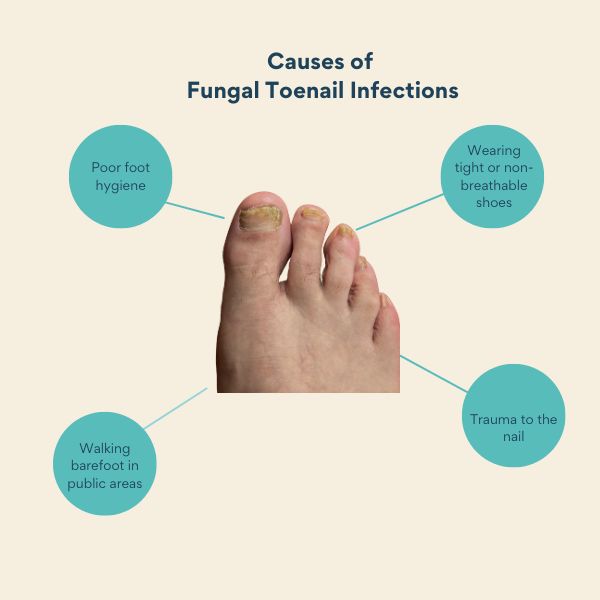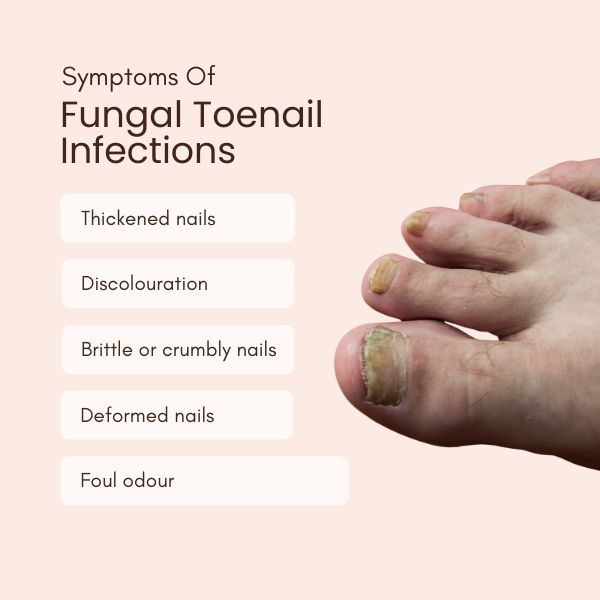
Fungal toenail infections, also known as onychomycosis, are a common condition that affects millions of people worldwide. While they may seem like a mere cosmetic concern, these infections can lead to discomfort, pain, and even complications if left untreated. There are several experts from the best skin clinics in South Delhi who have explored the causes, symptoms, and available treatments for fungal toenail infections.
Causes of Fungal Toenail Infections
Fungal toenail infections are primarily caused by dermatophytes, a type of fungi that thrive in warm and moist environments. However, other types of fungi, such as yeasts and moulds, can also contribute to these infections. Common risk factors that increase the likelihood of developing a fungal toenail infection include:

- Poor foot hygiene: Not properly cleaning and drying the feet can create an environment conducive to fungal growth.
- Wearing tight or non-breathable shoes: Shoes that don’t allow for proper ventilation can promote moisture accumulation, creating an ideal environment for fungi.
- Walking barefoot in public areas: Public swimming pools, gyms, and communal showers are breeding grounds for fungi, making it important to wear protective footwear in these settings.
- Trauma to the nail: Injuries that cause cracks or separations in the nail can provide an entry point for fungi.
Symptoms of Fungal Toenail Infections
Fungal toenail infections can manifest in various ways, and their severity can range from mild to severe. The following symptoms are commonly associated with onychomycosis:

- Thickened nails: Infected nails often become thicker than usual and may be difficult to trim.
- Discolouration: Nails may turn yellow, brown, or even greenish due to the presence of fungi.
- Brittle or crumbly nails: Infected nails may become fragile and prone to crumbling or splitting.
- Deformed nails: As the infection progresses, nails can become distorted in shape and lose their natural curvature.
- Foul odour: Fungal toenail infections may cause a distinct odour emanating from the affected nails.
Treatment Options for Fungal Toenail Infections
When it comes to treating fungal toenail infections, several options are available. The choice of treatment depends on the severity of the infection, the overall health of the individual, and personal preferences. Here are some common approaches:
- Topical antifungal medications: Over-the-counter and prescription antifungal creams, lotions, or nail lacquers can be applied directly to the infected nails. However, these treatments often require long-term use and may not penetrate the nail deeply enough for more severe cases.
- Oral antifungal medications: In cases of moderate to severe infections, oral antifungal medications may be prescribed. These medications work systemically, reaching the infected nail through the bloodstream. However, they may have side effects and interactions with other medications, requiring careful monitoring by a healthcare professional.
- Laser treatment: Laser therapy is a relatively new and promising option for fungal toenail infections. It involves using a laser to target and destroy the fungi without causing damage to the surrounding tissue. Several sessions may be required to achieve satisfactory results.
- Surgical intervention: In severe cases where conservative treatments have failed, surgical intervention may be necessary. This involves removing the infected nail or a portion of it to allow for the regrowth of a healthy nail.
Prevention and Lifestyle Tips
Preventing fungal toenail infections is often easier than treating them. Here are some preventive measures and lifestyle tips to keep your toenails healthy:
- Practice good foot hygiene: Wash your feet regularly, dry them thoroughly (especially between the toes), and use talcum powder to absorb moisture.
- Wear proper footwear: Opt for breathable shoes made of natural materials and avoid wearing tight-fitting or non-breathable shoes for prolonged periods.
- Protect your feet in public areas: Wear flip-flops or sandals in communal showers, swimming pools, and other public spaces to minimize the risk of fungal exposure.
- Trim nails properly: Cut your nails straight across and file the edges to prevent ingrown toenails and potential nail damage.
- Avoid sharing personal items: Do not share towels, socks, shoes, or nail clippers with others, as this can increase the chances of fungal transmission.
Conclusion
Fungal toenail infections can be both unsightly and uncomfortable, but with the right knowledge and timely intervention, they can be effectively managed and treated. If you suspect a fungal infection, it is advisable to consult a healthcare professional who can recommend the most suitable treatment option based on your specific condition. According to the best dermatologists in South Delhi, by practising good foot hygiene and taking preventive measures, you can significantly reduce the risk of developing fungal toenail infections and maintain healthy nails for years to come.
